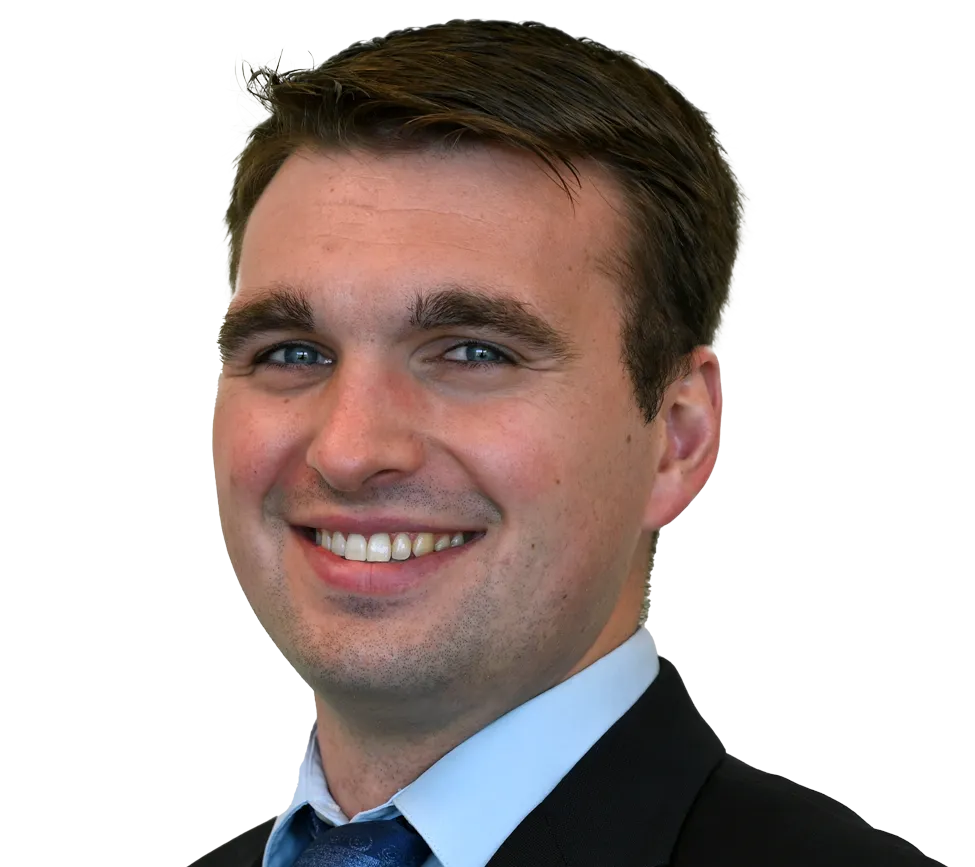

- Ph.D., Physics, University of Rochester, 2021
- M.A., Physics, University of Rochester, 2017
- B.A., Physics, Music, and Mathematics, Hartwick College, 2015
- Project Management Professional (PMP)
- Adjunct Faculty, Physics, University of Rochester, 2016
- Adjunct Faculty, Center for Student Success, Hartwick College, 2018
- University of Rochester Advanced Teaching Award
- Hartwick College John Christopher Hartwick Scholarship
- Hartwick College President’s Leadership Award
- Sigma Pi Sigma Physics Honor Society
- Kappa Mu Epsilon Mathematics Honor Society
- International Society for Magnetic Resonance in Medicine – ISMRM (member)
- Organization for Human Brain Mapping – OHBM (member)
Dr. Murray's expertise is in electromagnetism physics, software development, image processing, and electric vehicle battery testing. He has extensive experience in image analysis, statistical modeling, big data analysis methods, machine learning, and numerical simulations.
Programming languages and processing software experience include Python, C++, MATLAB, LaTex, Kotlin, FSL, Freesurfer, and various machine learning packages, including scikit-learn and pytorch. He provides a range of professional technical services to clients including:
- Electromagnetism (EM) modeling, Radio Frequency (RF) and EM interference (EMI) testing.
- Scientific support for legal activities, such as Intellectual Property matters and other litigation.
- Advanced image (optical and computed tomography (CT)), video, and audio processing, and thermal (IR) imaging.
- Electric Vehicle (EV) Battery testing and post-test developmental analysis.
- Failure analysis relating to EV batteries, electronics, and Lithium-ion batteries.
Prior to joining Exponent, Dr. Murray specialized in magnetic resonance imaging technology, image and signal processing, and computational neuroscience, with applications to neurodegeneration and the developing brain. He brings a wide breadth of knowledge from various fields of study, including medical imaging, bioinformatics, neuroscience, astronomical imaging systems, and sound engineering, to complement his experimental design process to diagnose problems and find solutions in imaging and computing systems.
His graduate research included developing theoretical quantitative brain imaging markers and experimentally applying them to better understand brain tissue changes associated with cerebrovascular disease. Of these markers, functional, structural, and microstructural MRI modalities were leveraged simultaneously to offer a more comprehensive overview of the intricacies of the brain and how pathology impacts those respective signals. Previous research included cosmological modeling of the expansion of the universe, simulations of the magnetohydrodynamics of stellar environments, a radio survey of star-forming galaxies using the Arecibo telescope, and interdisciplinary research to understand the connections between music and the natural sciences.
![SOFTWARE & COMPUTER ENGINEERING [EECS]](/sites/default/files/styles/filter_content/public/media/images/GettyImages-1341115371.jpg.webp?itok=hIlekpSo)